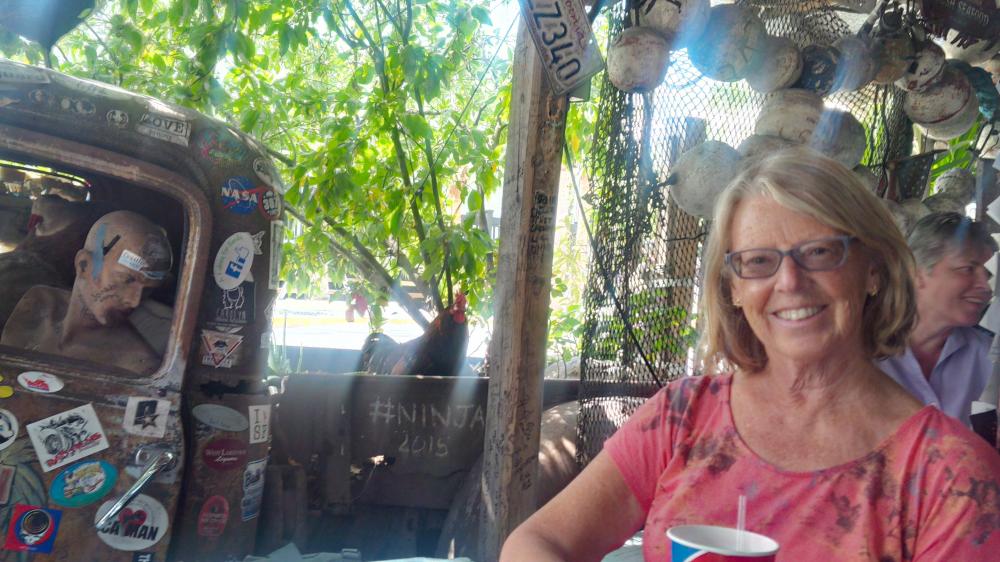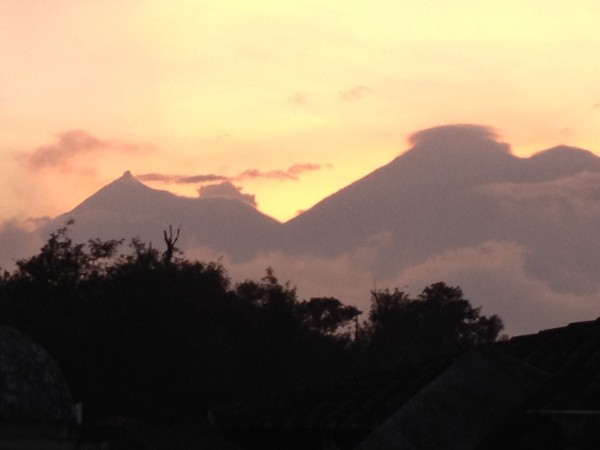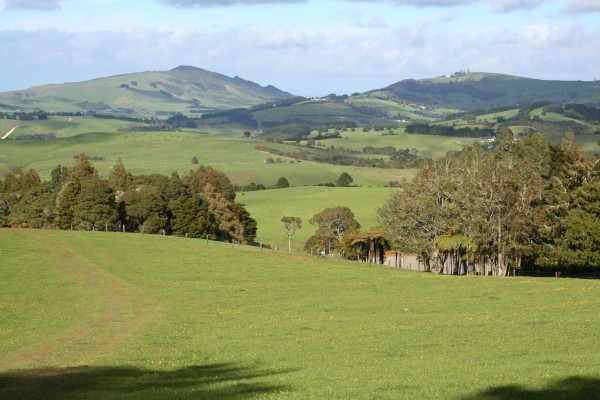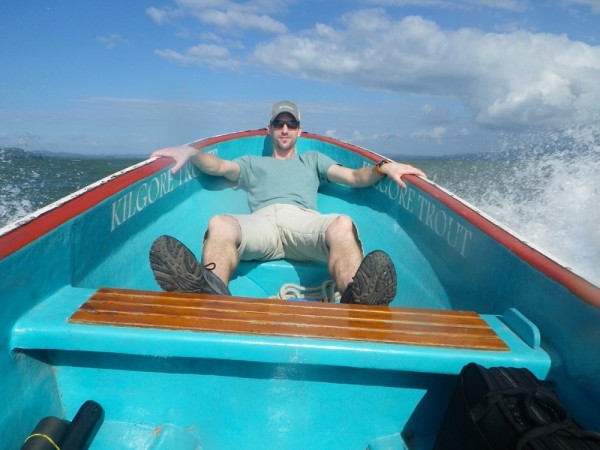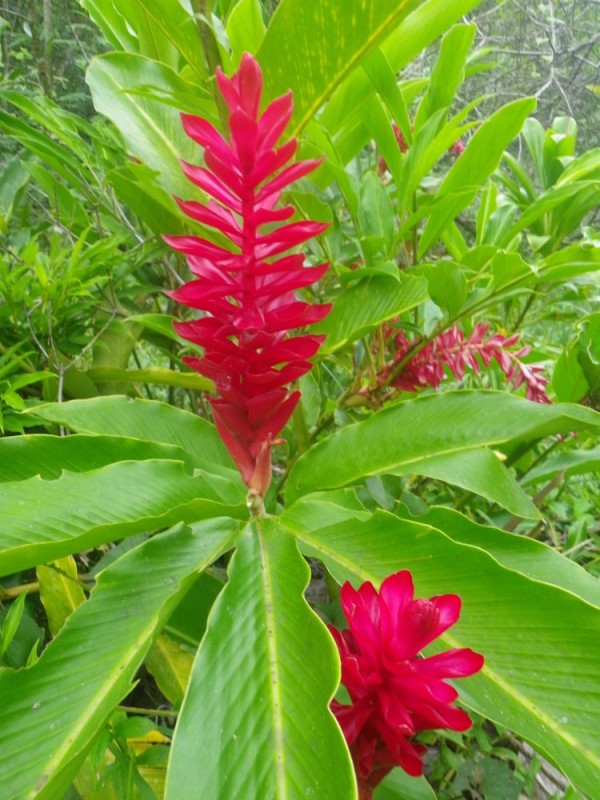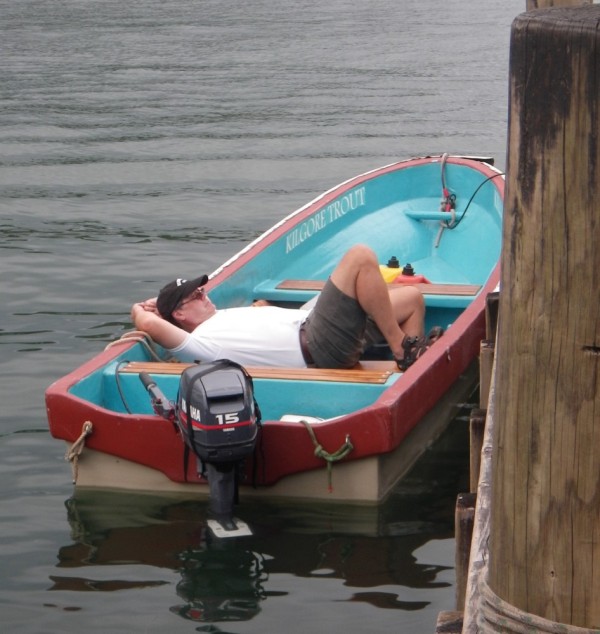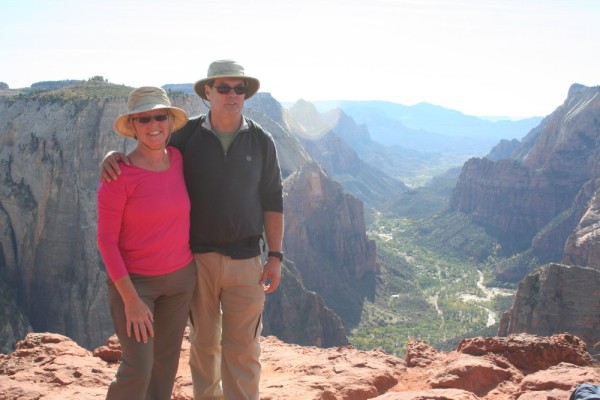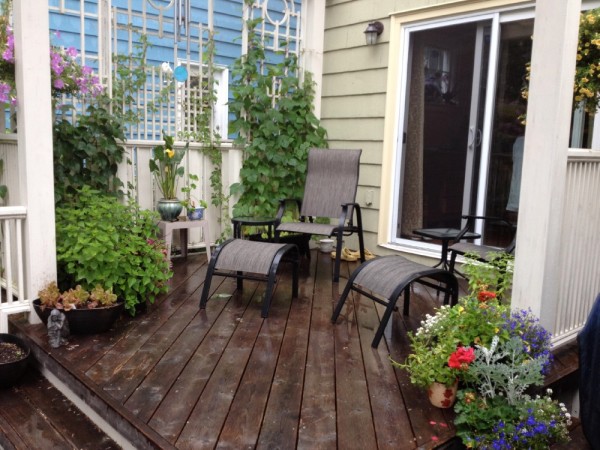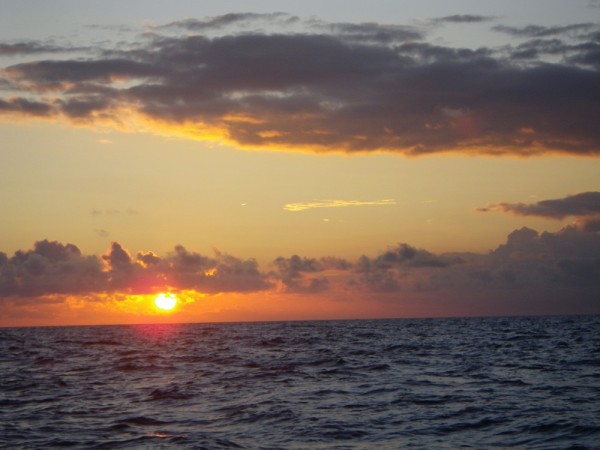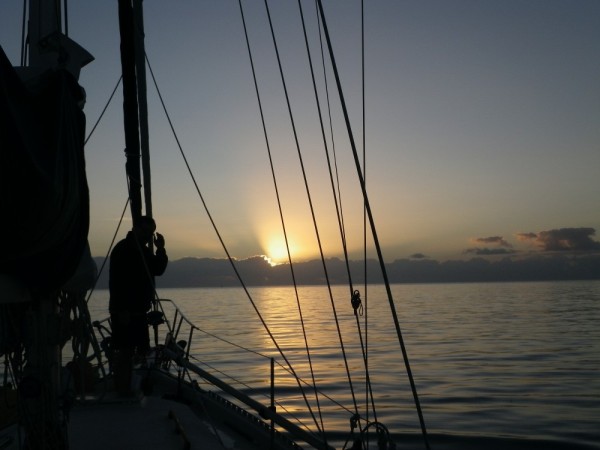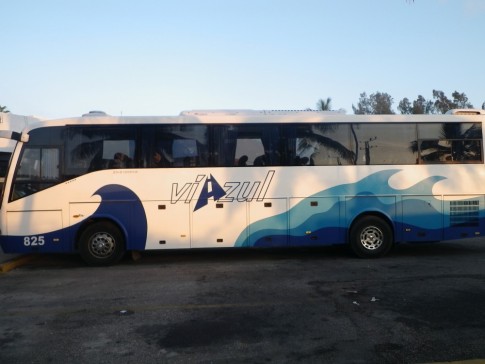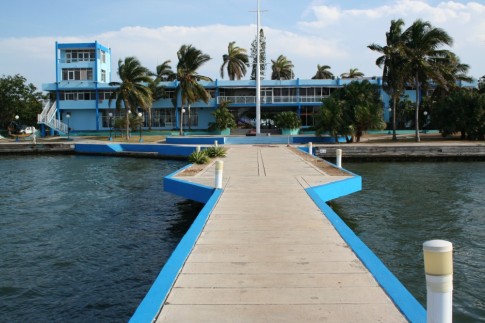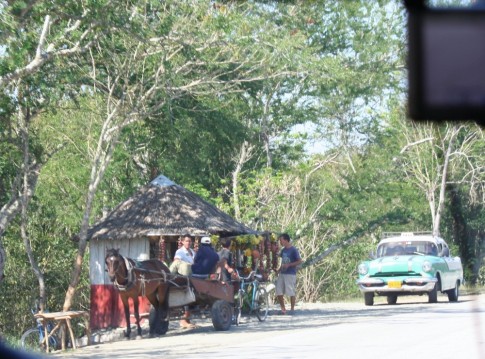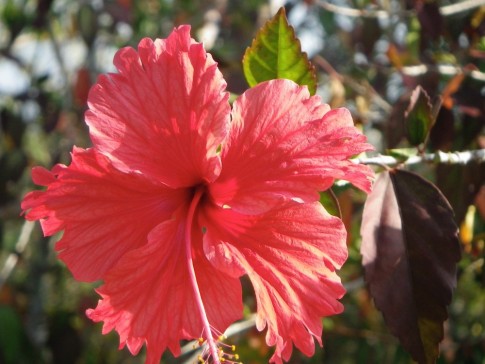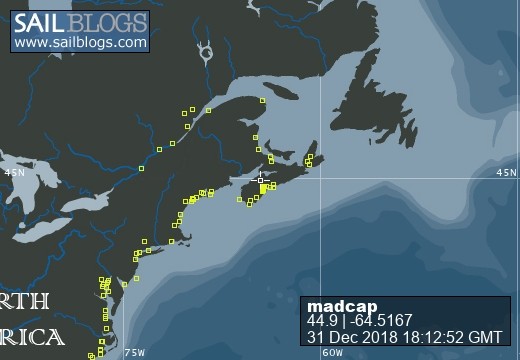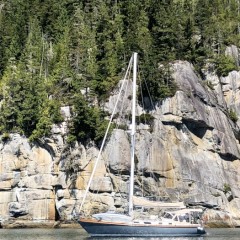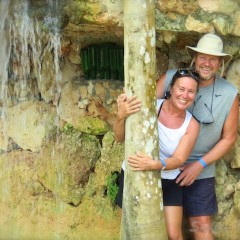
Madcap Sailing
31 December 2018 | Gold River Marina, Nova Scotia, Canada
06 August 2018 | Mahone Bay, Nova Scotia
15 June 2018
26 May 2018 | Gold River Marina, Gold River, NS
18 May 2018 | Gold River Marina, Gold River, NS
24 March 2018 | boat in Gold River, NS and crew in Halifax
22 May 2017 | Whittaker Creek, Oriental, NC
15 May 2017 | Boat in Oriental, crew in New Orleans and Nova Scotia
26 April 2017 | Oriental, NC
26 April 2017 | Oriental, NC
23 April 2017 | Oriental, NC
20 April 2017 | Ocean Isle Marina, Ocean Beach, NC at Mile 335.6
17 April 2017 | Dewees Creek, near Charleston, NC
14 April 2017 | St Simons Island
12 April 2017 | Fernandina Beach, FL
11 April 2017 | St Augustine, FL
07 April 2017 | Vero Beach, Florida
04 April 2017 | Ft Pierce
03 April 2017 | Ft Pierce, FL
30 March 2017 | Ft Pierce, Florida
Road Trip Part 2 - Santiago
31 March 2011 | Santiago de Cuba
Beth - 90's
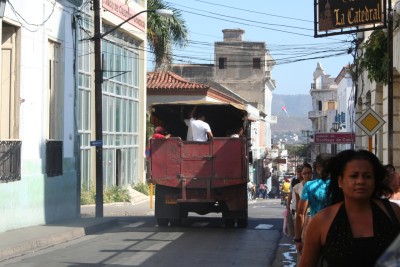
We rolled down over La Farola - the magnificent highway built in 1964, that links Baracoa with the rest of the country. The views were spectacular and we stopped whenever we could for pictures. Often we found vendors peddling the famous cucuruchus - cones of palm frond filled with grated coconut mixed with honey and sugar (and very delicious - the ones we bought had a slightly smoky flavour to them) or cocoa powder or coffee or bananas. We bought some of everything - for pesos - as we took our pictures. It reminded us a bit of the Hope - Princeton highway in British Columbia - except the vistas had palm trees! We wondered where the children in these remote areas go to school (given Cuba’s extraordinary literacy rate of well over 90% they must go somewhere) and were told later that every little area has a teacher - they might have to walk a ways, but there will be school!
It was interesting, although not particularly attractive to pass by Guantanamo - that infamous place that has become a familiar name to all of us. There is no sign of the US base from the road, and the town itself appeared unremarkable. We saw more Cuban military vehicles and personnel in this area, but no sign of Americans. There are Control Points all along the roads, but there never seems to be much action there - a group of policemen wandering about, but rarely a vehicle stopped and no show of power - i.e. machine guns on shoulders. We stopped to pluck tamarind pods from one of the trees growing along the road, and Jackie laughed to see our faces as we tasted the sour fruit. I like it in sauces and juice, but not straight from the pod!
By late morning, we drove into Santiago de Cuba (Cuba’s second largest city, pop 444,000) and immediately found ourselves in a maze of busy streets and signs and honking horns. As we headed toward the centre of the old historic area, they became narrower and busier with tall buildings on every side. The important thing is to just keep cool - Jackie did that admirably as she drove us around - and know that somehow, the street signs will start matching up with the map! Eventually, we got to Hartmann Street at Jose A Saco in the historical area, and found a parking spot. From there we thought we would scout out the area, and find some lunch.
We were barely out of the car doors before a well dressed young man offered to take us to a Casa Particular. John stayed with the car while Jackie, Jim and I followed him to one house where they had no room. Around another corner and up another street, he knocked on a window and we were told there was one room available here with another nearby. We took a look and then went to see the other one, but decided that we would prefer to stay in the same house so we said no. The fellow was hard to shake, and as we made our way back to the car, saying we wanted to have lunch before looking some more, yet another hustler told us to follow him. We did for a bit but it became clear that we were being led farther away from the main area so we turned back and said we would find our own place. They both kept motioning us on but we ignored them and eventually they gave up. We have discovered that these folks are paid a “finders fee” by the owners of the casas and I must say, they work hard for their money! This was the only place that we found them particularly annoying and persistent.
After a fairly bland lunch of pizza and spaghetti at a CUC restaurant (that was, thank goodness, air conditioned) we set off on foot to check out some of the nearby Casa Particulares that were listed in our guide book. At the first one, we struck gold. Lourdes de la Caridad Gomez Beaton, at #454 Felix Pena, had two rooms. It is a grand old Santiago house that took our breaths away - not because it is majestic or elegant, but because what is behind that big wooden door that opens directly on the street is such a contrast to what is outside. From a dusty shabby street with folks lounging in doorways, we walked through the door, climbed the stairs to the second level and found a high ceilinged living room with a balcony over the street. From there we walked back through the dining room with an open kitchen just on the other side to a leafy green courtyard area - a plastic roof a couple of stories higher would keep the rain out; vines draping down the walls and big potted plants added to the greenery and serenity. A couple of chairs flanked a patio table and it didn’t seem like we could be up a level and back a couple of rooms from that busy street. Our two bedrooms, both with ensuite baths opened off this area. Stairs led up to another level open to the sky, where the big stone washing sink stood in a corner and clotheslines stretched from wall to wall, and the family dog slept behind his little gate. Yet another set of stairs went up to the very top of the house, and the view from there was 360 degrees. And what a view. The building next door was in ruins; a big cathedral stood a couple of blocks over and I knew I’d be taking pictures of the steeple; the buildings all around were a hodge podge of old and very old, crumbling and being stuck back together. There were lines of laundry everywhere and rooms added on and up as families grew. As much as I try, I can’t even begin to describe how it looked. It was like no place I have ever been before. Intensely populated, crumbling (and yet I knew from the house we had just walked through that there must be many other places just like it among the buildings I was looking at) humming with life.
Lourdes was a lovely warm, motherly woman and she got us settled in while her husband took the guys to the car park where we could leave the car safely for 2 CUC per day. Unlike every other place we stayed, there was not an extended family living here, although there probably was at one time. Most homes have one or two rooms to rent while Lourdes had four. We have found that when families open rooms to paying guests, they are able to hire some help and Lourdes has a couple of women helping her in the kitchen and with laundry.
We headed out to explore, first to Parque Cespedes - the centre of activity here and named after Carlos Maneul de Cespedes who issued the Grito de Yara declaring Cuban independence in 1868. Each of the wonderful old buildings around the square has a story: the Ayuntamiento where we saw the balcony from which Fidel Castro announced the Revolution’s victory on January 2, 1959; the intricate lattice windows on the Casa de Diego Velazquez - the oldest house still standing (1522) and the former residence of the island’s first governor; the Museo de Ambiente Historico Cubano, originally a trading house and gold foundry - now a museum. We didn’t go into any of these - it was enough to walk the streets with our gazes upwards.
There is a lively Afro-Caribbean culture here, along with the Spanish one, and as my guidebook says, since Santiago is closer to Haiti and the Dominican Republic than to Havana, the influences tend to come as much from the east as from the west. We saw that in the people on the streets, the prevalent sound of drums from private residences and the music houses. 1950’s cars serving as taxis were lined up by the cathedral and their drivers offered to take us anywhere we’d like to go. We declined and continued on foot. Several shops had displays of the usual souvenir things - mugs and hats and T-shirts - always Che Guevera memorabilia, carvings and paintings. Vendors lined the streets with similar offerings - but nothing any better than in Baracoa.
We then made our way across the square to the Hotel Casa Grande (1914) and settled ourselves on its wide luxurious terrace cafe for another session of mohito sampling. These were good - nice and tart with lots of fresh mint and we felt quite grand ourselves as we sat here where Graham Greene used to sit in the 50’s, writing and drinking and relaxing. The breeze wafted through, the long bar at the end was dark polished wood, and the waiters were dressed in sharp black and white. It seemed still like a place out of the 50’s and was the perfect spot to people watch and settle into the flow of the city. (We saw pictures a week later when it wasn’t so peaceful. In the Museo de la Revolucion in Havana, Tom found a picture of a bloody battle taking place on this very same terrace - chairs and tables in disarray, soldiers leaning over the railings, rifles a plenty.) The elevators didn’t work so we walked up to the terrace on the 5th floor to look over the city. Beautiful - but no better than our own rooftop view at Lourdes’ casa. Down at ground level once more, we went around the corner and up the steps into the Catedral de Nuestra Senora de la Asuncion (completed in 1922 and the most recent of a series of cathedrals that have stood here since 1520). It is truly beautiful, but every time we stopped, we were approached by people looking for money. We had been warned by Tina that there is more begging here, and we certainly saw more of it. We left rather quickly, and made our way gradually back to our casa for a rest before dinner.
Lourdes put on a lavish dinner with shrimp (big ones) or chicken accompanied by plantains, rice, a salad platter of not only cabbage, tomato and cucumber, but also green beans and beets. I wished I knew more Spanish because while we could make ourselves understood for the basic things, real conversation was impossible. John managed the best of any of us so he acted as our interpreter much of the time.
Jim and I took another evening stroll - up to Parques Cespedes, looking for outdoor music, and then along the street to Plaza de Dolores - a lovely shady spot with an outdoor restaurant that promised to have the best mohitos in town. I can’t imagine now why we passed up the opportunity to test that claim, but we did! Motorcycles with chrome gleaming were lined up all along the sidewalk - just like we see near the ferry terminal in Halifax. A group of folks had guitars but they were just chatting so we continued our walk. We never, at any time, had any worries about safety. We walked through the historic area after dark on both nights we were here without any kind of apprehension - saying Hola to people we met and receiving the same in return.
We packed Wednesday just about as full as we could! After a hearty breakfast, the four of set off on foot to follow a suggested walking tour in the Lonely Planet guidebook. At our first stop, the Balcon de Velazquez looking out over the Tivoli area, we were approached by a young man who started telling us about the area - in very good English. He was knowledgeable, informative and didn’t start trying to hustle us. But we liked what we saw, so after a little huddle, we four decided to ask him if for 4 CUC, he would take a couple of hours to show us around and talk with us. (Interesting that we asked him instead of the other way around!) He was delighted and so were we. We walked through Tivoli, hearing about the life of a young Cuban from his point of view. He was very frank as he shared the frustrations of not being able to choose where to live, of being paid very little, of the lack of freedom. In his words, “Yes, we all have excellent education and health care, and we have rations for food, but we _ are _ not _ free.” The literacy rate in Cuba is well over 90% - in fact UNICEF declares that the total adult literacy rate in Cuba is 100%. They have doctors in over 100 countries. The under 5 mortality rate in 2009 ranked sixth lowest in the world and the neonatal mortality rate in the same year was third lowest in the world. The poor are not as poor as in many of the Central American countries, and I would be surprised if anyone was starving in Cuba. But the other side of that is that few people have “enough”. They rely on income from relatives living abroad, from buying and selling anything they can get their hands on, from the tourist industry.
He told us “Marriage is out of fashion now” and young couples move in with his parents or her parents - whoever has room. An official comes to determine whether or not there really is room, (sleeping on the sofa is not enough) and does the same if a person wants to move to a different house or a different city. These same officials keep a watch on each neighbourhood, and they know who is there.
We went to the waterfront area, at his suggestion, took a horse drawn wagon ride to the Cementerio Santa Ifigenia - the imposing cemetery where many important Cuban figures are buried and where the highlight is Jose Marti’s beautifully designed mausoleum. We watched the changing of the guard there, and strolled by Emilio Bacardi’s tomb and with a nod from our guide saw where some renovations are being made to perhaps accommodate an elderly and ailing current political person when the need arises.
After a taste of rum at the little shop that is part of the Rum factory, a lunch stop at a paladar and the opportunity to buy some rum at a good price, we said our goodbyes to our guide and paid him a little more than we had agreed on earlier. Once again, we made the decision before he had to ask. Sometimes it works to be spontaneous and flexible. It sure did here. While we enabled him to increase his income, he gave us an insider’s and unofficial view of Cuban life.
Jackie, Jim and I visited the Casa de la Trova, one of the music houses that exist in every Cuban town to hear some lively music and view beautiful dancing. I just do not know how these folks can move their bodies the way they do. I’m sure they must have extra joints! There is no tightness in their hips - that’s for sure. I think of all the times we try to open ours in yoga postures - that is no issue here!! One particular older Cuban gentleman in dark pants, creamy shirt, suspenders and straw hat barely moved on soft feet as he led a beautiful black Cuban woman through the intricate steps of a dance. She twirled and dipped and swayed, and it was a sight to behold. I danced at the back of the room with a fellow who told me he was a dance instructor at the school next door. He said I had good rhythm, but I’m pretty sure he told that to dozens of women every day!
We wandered through busy streets and quiet ones; we bought soft ice cream from a street vendor, and slices of sweet layer cake with guava filling, and nut brittle. We took a look in the restaurant that exists now in the gorgeous old Bacardi mansion. (The Bacardi family left before the Revolution and this is one of the few countries in the world where you won’t find Bacardi rum!) Every block or two, there was someone selling something. It all looked clean and indeed none of us developed any stomach trouble - except from over-eating!
In the evening, we all trooped off to the Casa de las Tradiciones - an alternative to the Casa de la Trova. The music was good and the people watching most interesting although I suspect it heated up more as the evening got later. We got a bit of a weird feeling from some of the middle aged white men who were surrounded by troops of beautiful young women. That is also part of Cuba. On the way home, Jim and I followed the sound of drums to a building where we were motioned in. Unfortunately the drumming and dancing were just coming to an end. It was distinctly AfroCuban and I wondered if it might not be part of the Santeria religious culture. Once again, I longed for the Spanish words to ask because while everyone was friendly, conversation was just not happening.
It was time to retrieve the car on Thursday morning and move on to our next destination, Bayamo. We said goodbye to Lourdes and her husband and promised we’d be back! There is so much more to see and do here than we had time for - museums and music and fortresses; closer looks at the architecture; the ballet, the Tropicana show, the galleries. We kept consoling ourselves that this was our introduction - our first taste. We had limited time and we made good use of what we had. There is no question that we will return here.
It was interesting, although not particularly attractive to pass by Guantanamo - that infamous place that has become a familiar name to all of us. There is no sign of the US base from the road, and the town itself appeared unremarkable. We saw more Cuban military vehicles and personnel in this area, but no sign of Americans. There are Control Points all along the roads, but there never seems to be much action there - a group of policemen wandering about, but rarely a vehicle stopped and no show of power - i.e. machine guns on shoulders. We stopped to pluck tamarind pods from one of the trees growing along the road, and Jackie laughed to see our faces as we tasted the sour fruit. I like it in sauces and juice, but not straight from the pod!
By late morning, we drove into Santiago de Cuba (Cuba’s second largest city, pop 444,000) and immediately found ourselves in a maze of busy streets and signs and honking horns. As we headed toward the centre of the old historic area, they became narrower and busier with tall buildings on every side. The important thing is to just keep cool - Jackie did that admirably as she drove us around - and know that somehow, the street signs will start matching up with the map! Eventually, we got to Hartmann Street at Jose A Saco in the historical area, and found a parking spot. From there we thought we would scout out the area, and find some lunch.
We were barely out of the car doors before a well dressed young man offered to take us to a Casa Particular. John stayed with the car while Jackie, Jim and I followed him to one house where they had no room. Around another corner and up another street, he knocked on a window and we were told there was one room available here with another nearby. We took a look and then went to see the other one, but decided that we would prefer to stay in the same house so we said no. The fellow was hard to shake, and as we made our way back to the car, saying we wanted to have lunch before looking some more, yet another hustler told us to follow him. We did for a bit but it became clear that we were being led farther away from the main area so we turned back and said we would find our own place. They both kept motioning us on but we ignored them and eventually they gave up. We have discovered that these folks are paid a “finders fee” by the owners of the casas and I must say, they work hard for their money! This was the only place that we found them particularly annoying and persistent.
After a fairly bland lunch of pizza and spaghetti at a CUC restaurant (that was, thank goodness, air conditioned) we set off on foot to check out some of the nearby Casa Particulares that were listed in our guide book. At the first one, we struck gold. Lourdes de la Caridad Gomez Beaton, at #454 Felix Pena, had two rooms. It is a grand old Santiago house that took our breaths away - not because it is majestic or elegant, but because what is behind that big wooden door that opens directly on the street is such a contrast to what is outside. From a dusty shabby street with folks lounging in doorways, we walked through the door, climbed the stairs to the second level and found a high ceilinged living room with a balcony over the street. From there we walked back through the dining room with an open kitchen just on the other side to a leafy green courtyard area - a plastic roof a couple of stories higher would keep the rain out; vines draping down the walls and big potted plants added to the greenery and serenity. A couple of chairs flanked a patio table and it didn’t seem like we could be up a level and back a couple of rooms from that busy street. Our two bedrooms, both with ensuite baths opened off this area. Stairs led up to another level open to the sky, where the big stone washing sink stood in a corner and clotheslines stretched from wall to wall, and the family dog slept behind his little gate. Yet another set of stairs went up to the very top of the house, and the view from there was 360 degrees. And what a view. The building next door was in ruins; a big cathedral stood a couple of blocks over and I knew I’d be taking pictures of the steeple; the buildings all around were a hodge podge of old and very old, crumbling and being stuck back together. There were lines of laundry everywhere and rooms added on and up as families grew. As much as I try, I can’t even begin to describe how it looked. It was like no place I have ever been before. Intensely populated, crumbling (and yet I knew from the house we had just walked through that there must be many other places just like it among the buildings I was looking at) humming with life.
Lourdes was a lovely warm, motherly woman and she got us settled in while her husband took the guys to the car park where we could leave the car safely for 2 CUC per day. Unlike every other place we stayed, there was not an extended family living here, although there probably was at one time. Most homes have one or two rooms to rent while Lourdes had four. We have found that when families open rooms to paying guests, they are able to hire some help and Lourdes has a couple of women helping her in the kitchen and with laundry.
We headed out to explore, first to Parque Cespedes - the centre of activity here and named after Carlos Maneul de Cespedes who issued the Grito de Yara declaring Cuban independence in 1868. Each of the wonderful old buildings around the square has a story: the Ayuntamiento where we saw the balcony from which Fidel Castro announced the Revolution’s victory on January 2, 1959; the intricate lattice windows on the Casa de Diego Velazquez - the oldest house still standing (1522) and the former residence of the island’s first governor; the Museo de Ambiente Historico Cubano, originally a trading house and gold foundry - now a museum. We didn’t go into any of these - it was enough to walk the streets with our gazes upwards.
There is a lively Afro-Caribbean culture here, along with the Spanish one, and as my guidebook says, since Santiago is closer to Haiti and the Dominican Republic than to Havana, the influences tend to come as much from the east as from the west. We saw that in the people on the streets, the prevalent sound of drums from private residences and the music houses. 1950’s cars serving as taxis were lined up by the cathedral and their drivers offered to take us anywhere we’d like to go. We declined and continued on foot. Several shops had displays of the usual souvenir things - mugs and hats and T-shirts - always Che Guevera memorabilia, carvings and paintings. Vendors lined the streets with similar offerings - but nothing any better than in Baracoa.
We then made our way across the square to the Hotel Casa Grande (1914) and settled ourselves on its wide luxurious terrace cafe for another session of mohito sampling. These were good - nice and tart with lots of fresh mint and we felt quite grand ourselves as we sat here where Graham Greene used to sit in the 50’s, writing and drinking and relaxing. The breeze wafted through, the long bar at the end was dark polished wood, and the waiters were dressed in sharp black and white. It seemed still like a place out of the 50’s and was the perfect spot to people watch and settle into the flow of the city. (We saw pictures a week later when it wasn’t so peaceful. In the Museo de la Revolucion in Havana, Tom found a picture of a bloody battle taking place on this very same terrace - chairs and tables in disarray, soldiers leaning over the railings, rifles a plenty.) The elevators didn’t work so we walked up to the terrace on the 5th floor to look over the city. Beautiful - but no better than our own rooftop view at Lourdes’ casa. Down at ground level once more, we went around the corner and up the steps into the Catedral de Nuestra Senora de la Asuncion (completed in 1922 and the most recent of a series of cathedrals that have stood here since 1520). It is truly beautiful, but every time we stopped, we were approached by people looking for money. We had been warned by Tina that there is more begging here, and we certainly saw more of it. We left rather quickly, and made our way gradually back to our casa for a rest before dinner.
Lourdes put on a lavish dinner with shrimp (big ones) or chicken accompanied by plantains, rice, a salad platter of not only cabbage, tomato and cucumber, but also green beans and beets. I wished I knew more Spanish because while we could make ourselves understood for the basic things, real conversation was impossible. John managed the best of any of us so he acted as our interpreter much of the time.
Jim and I took another evening stroll - up to Parques Cespedes, looking for outdoor music, and then along the street to Plaza de Dolores - a lovely shady spot with an outdoor restaurant that promised to have the best mohitos in town. I can’t imagine now why we passed up the opportunity to test that claim, but we did! Motorcycles with chrome gleaming were lined up all along the sidewalk - just like we see near the ferry terminal in Halifax. A group of folks had guitars but they were just chatting so we continued our walk. We never, at any time, had any worries about safety. We walked through the historic area after dark on both nights we were here without any kind of apprehension - saying Hola to people we met and receiving the same in return.
We packed Wednesday just about as full as we could! After a hearty breakfast, the four of set off on foot to follow a suggested walking tour in the Lonely Planet guidebook. At our first stop, the Balcon de Velazquez looking out over the Tivoli area, we were approached by a young man who started telling us about the area - in very good English. He was knowledgeable, informative and didn’t start trying to hustle us. But we liked what we saw, so after a little huddle, we four decided to ask him if for 4 CUC, he would take a couple of hours to show us around and talk with us. (Interesting that we asked him instead of the other way around!) He was delighted and so were we. We walked through Tivoli, hearing about the life of a young Cuban from his point of view. He was very frank as he shared the frustrations of not being able to choose where to live, of being paid very little, of the lack of freedom. In his words, “Yes, we all have excellent education and health care, and we have rations for food, but we _ are _ not _ free.” The literacy rate in Cuba is well over 90% - in fact UNICEF declares that the total adult literacy rate in Cuba is 100%. They have doctors in over 100 countries. The under 5 mortality rate in 2009 ranked sixth lowest in the world and the neonatal mortality rate in the same year was third lowest in the world. The poor are not as poor as in many of the Central American countries, and I would be surprised if anyone was starving in Cuba. But the other side of that is that few people have “enough”. They rely on income from relatives living abroad, from buying and selling anything they can get their hands on, from the tourist industry.
He told us “Marriage is out of fashion now” and young couples move in with his parents or her parents - whoever has room. An official comes to determine whether or not there really is room, (sleeping on the sofa is not enough) and does the same if a person wants to move to a different house or a different city. These same officials keep a watch on each neighbourhood, and they know who is there.
We went to the waterfront area, at his suggestion, took a horse drawn wagon ride to the Cementerio Santa Ifigenia - the imposing cemetery where many important Cuban figures are buried and where the highlight is Jose Marti’s beautifully designed mausoleum. We watched the changing of the guard there, and strolled by Emilio Bacardi’s tomb and with a nod from our guide saw where some renovations are being made to perhaps accommodate an elderly and ailing current political person when the need arises.
After a taste of rum at the little shop that is part of the Rum factory, a lunch stop at a paladar and the opportunity to buy some rum at a good price, we said our goodbyes to our guide and paid him a little more than we had agreed on earlier. Once again, we made the decision before he had to ask. Sometimes it works to be spontaneous and flexible. It sure did here. While we enabled him to increase his income, he gave us an insider’s and unofficial view of Cuban life.
Jackie, Jim and I visited the Casa de la Trova, one of the music houses that exist in every Cuban town to hear some lively music and view beautiful dancing. I just do not know how these folks can move their bodies the way they do. I’m sure they must have extra joints! There is no tightness in their hips - that’s for sure. I think of all the times we try to open ours in yoga postures - that is no issue here!! One particular older Cuban gentleman in dark pants, creamy shirt, suspenders and straw hat barely moved on soft feet as he led a beautiful black Cuban woman through the intricate steps of a dance. She twirled and dipped and swayed, and it was a sight to behold. I danced at the back of the room with a fellow who told me he was a dance instructor at the school next door. He said I had good rhythm, but I’m pretty sure he told that to dozens of women every day!
We wandered through busy streets and quiet ones; we bought soft ice cream from a street vendor, and slices of sweet layer cake with guava filling, and nut brittle. We took a look in the restaurant that exists now in the gorgeous old Bacardi mansion. (The Bacardi family left before the Revolution and this is one of the few countries in the world where you won’t find Bacardi rum!) Every block or two, there was someone selling something. It all looked clean and indeed none of us developed any stomach trouble - except from over-eating!
In the evening, we all trooped off to the Casa de las Tradiciones - an alternative to the Casa de la Trova. The music was good and the people watching most interesting although I suspect it heated up more as the evening got later. We got a bit of a weird feeling from some of the middle aged white men who were surrounded by troops of beautiful young women. That is also part of Cuba. On the way home, Jim and I followed the sound of drums to a building where we were motioned in. Unfortunately the drumming and dancing were just coming to an end. It was distinctly AfroCuban and I wondered if it might not be part of the Santeria religious culture. Once again, I longed for the Spanish words to ask because while everyone was friendly, conversation was just not happening.
It was time to retrieve the car on Thursday morning and move on to our next destination, Bayamo. We said goodbye to Lourdes and her husband and promised we’d be back! There is so much more to see and do here than we had time for - museums and music and fortresses; closer looks at the architecture; the ballet, the Tropicana show, the galleries. We kept consoling ourselves that this was our introduction - our first taste. We had limited time and we made good use of what we had. There is no question that we will return here.
Comments
| Vessel Name: | Madcap |
| Vessel Make/Model: | Bayfield 36 |
| Hailing Port: | Halifax, Nova Scotia |
| Crew: | James D Bissell (Jim) and Elizabeth Lusby (Beth) |
| About: | Beth and Jim have spent several winters sailing southern waters on s/v Madcap. They love Halifax in the summer, but loved to spend the winters exploring warmer places - the Bahamas, Cuba, Mexico, Guatemala, Belize, Honduras. |
| Extra: | |
| Social: |
Madcap
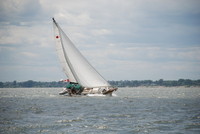
Who: James D Bissell (Jim) and Elizabeth Lusby (Beth)
Port: Halifax, Nova Scotia


